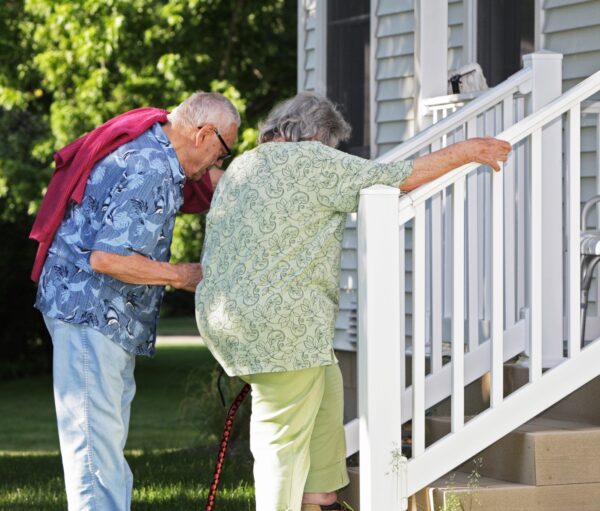Ensuring Home Stays Sweet As We Age

For most people, “Home Sweet Home” is more than a cross-stitched motto, it’s a fundamental value that remains through life. A recent survey completed by the American Association of Retired Persons (AARP) found that 77% of those 50 or over prefer to remain in their homes as they age. Importantly, this preference has remained steady over a decade of change, indicating that residents appreciate their community and their independence.
But most homes are not built with aging in mind; out of the 100 million homes in the U.S., only about 1% of them are suitable. As we grow old, some routine tasks take up more time. Medical conditions like balance issues, hearing or vision loss, mobility restrictions, and overall loss of mental acuity and strength can negatively impact daily living activities. To stay put at home, almost everyone will need to modify their residence at some point.
So, what are some key modifications to consider? Here are three areas that provide high impact for accessibility and safety.
- Lighting. Vision diminishes as we age, which can negatively impact our general health and basic daily activities. Recent research during a four-month dark winter period found “improved quality of light could improve quality of life, and lighting should be included as a factor promoting healthy aging at home” for seniors in Norway. Adding nightlights in hallways and bathrooms, lamps in reading and working areas, and placing tap-lights under cabinets ensures we can see what we are doing, and where we are doing it.
- Flooring. The older we get, the more at risk we are for falling; in fact, most injuries in older adults are due to a fall. In addition to injury, falls can restrict mobility, create additional fears, and limit activities. One of the best ways to reduce the risk of falling is to change the flooring. Concrete, ceramic, and marble floors can be slick and dangerous; small rugs or any type of shag carpet can create tripping hazards. A low pile carpet, which a wheelchair or walker can roll over, is a safe option and large area rugs should be secured with take or a slip-resistant backing. If falls become a persistent concern, compliant flooring may be needed.
- Furniture. We all know our bodies change as we age; we grow weaker, have less muscle mass, and our dimensions shift. Our furniture should adjust to this new functionality. Consider adding risers under the bed to make it easier to get in and out of. Use chairs that can support the head, neck, and back with a high backrest above the head; make sure there are armrests to assist with sitting and standing. If getting out of a chair is particularly difficult, consider a lift chair. An immediate change to undertake is to declutter and donate or sell unneeded furniture, so that there are clear pathways to easily navigate.
There are many small changes you can start with today if the above seem overwhelming, like installing grab bars in the bathroom or upgrading home technology to include remote communication. The key takeaway is to begin now instead of waiting until later, so your home stays sweet no matter what your age.


